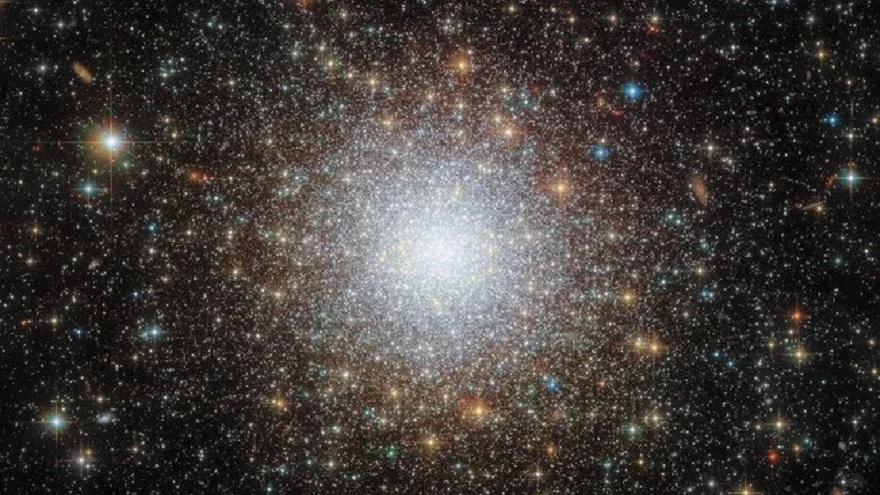The Hubble Space Telescope photographed the globular cluster NGC 2210. It looks like fluffy snow. It is located in the Large Magellanic Cloud at a distance of 158 thousand light-years from Earth.

Incredibly beautiful “snowy” cluster
Scientists working with the Hubble Space Telescope have delighted astronomy enthusiasts with an incredible “winter” image of the globular cluster NGC 2210, which resembles fluffy white snow. It is located in the Large Magellanic Cloud, next to our galaxy. The distance to it is 158 thousand light years.
The NGC 2210 cluster was discovered by John Herschel in 1835. However, due to the huge distance, scientists could not see it properly. Only the Hubble Space Telescope, which was launched almost 35 years ago, could cope with this task.
The most interesting thing about NGC 2210. It is 11.6 billion years old. It seems that it is incredibly old, because it was formed only 2 billion years after the Big Bang. However, among its kind, this spherical cluster is unusually young.
What is interesting about such objects?
In general, globular clusters are extremely ancient formations that can contain tens or hundreds of thousands of stars in a fairly small volume. There are several of them in the Large Magellanic Cloud, and all of them are included in the current review along with NGC 2210.
However, their age is much greater than that of the “snow” cluster. At least four clusters are over 13 billion years old, meaning they formed in a very short time after the Big Bang. Scientists are very interested in studying these systems because they are populations of very old stars that are close to each other, and they are quite easy to compare.
Studying the Large Magellanic Cloud, scientists came to the conclusion that the globular clusters there have about the same age and composition as those in the Milky Way. And this is very interesting, because these two galaxies did not form together. Maybe there was a time in the history of the Universe when similar objects appeared everywhere according to the same scenario.
According to www.space.com
Follow us on Twitter to get the most interesting space news in time
https://twitter.com/ust_magazine


